HIWRAP (High-Altitude Imaging Wind and Rain Airborne Profiler)
Airborne Sensors
HIWRAP (High-Altitude Imaging Wind and Rain Airborne Profiler)
HIWRAP is a NASA airborne technology demonstration Doppler radar instrument developed within NASA's IIP (Instrument Incubator) program. The radar is a dual-frequency (Ka/Ku-band), dual-beam (30º and 40º incidence angle), conical scan, solid-state transmitter-based system, designed for operation on the high-altitude (18-20 km) Global Hawk UAV (Unmanned Aerial Vehicle). The overall objective is to collect multi-look and multi-frequency measurements to map the 3D tropospheric and atmospheric winds, precipitation field and ocean surface wind field of tropical cyclones. 1) 2) 3) 4) 5)
The HIWRAP instrument development is a joint effort between NASA/GSFC (Goddard Spaceflight Center), the University of Massachusetts Center for Advanced Sensor and Communication Antennas (CASCA), Remote Sensing Solutions (RSS), University of Maryland of Baltimore County, and Welch Mechanical Designs.
Overview
Wind measurements are crucial for understanding and forecasting tropical storms since they are closely tied to the overall dynamics of the storm. The spatial and temporal resolution and availability of such measurements must be improved if hurricane intensity forecasting is to improve. Satellite scatterometers (e.g., QuikSCAT) and radiometers (e.g., WindSat) have provided ocean surface wind measurements in precipitation-free regions, but as yet, remote measurements of atmospheric winds have utilized surface-based or aircraft Doppler radars because there are still technical challenges for the spaceborne Doppler wind retrievals. Furthermore, spaceborne sensors have resolutions that are too large and revisit times that are too infrequent for providing critical information on rapidly developing weather events such as hurricanes in coastal regions.
Aircraft radar-measured atmospheric winds have filled this critical data gap and have been essential for understanding of various weather events such as tropical storms, and the subsequent improvement of parameterizations in forecast models. Tropical storms are often located in remote regions of the ocean making manned aircraft impractical because of their limited endurance. Along with the development of new technologies, NASA’s interests have more recently focused on UAVs, especially the HALE (High Altitude Long Endurance) UAV platforms such as the Northrop Grumman RG-4A Global Hawk. Wind and precipitation measurements from high-altitude aircraft, especially long-duration UAVs are highly desirable since they provide focused measurements with higher spatial and temporal sampling.
The HIWRAP development, started in 2005, is based on previous work and experimentation of IWARP (Imaging Wind and Rain Airborne Profiler) and RAWS (Radar Wind Sounder).
• IWARP is a C-/Ku-band instrument which collects high resolution Doppler and reflectivity profiles, simultaneously at four incidence angles, while conically scanning. This novel sampling approach allows this instrument to map the 3D ABL (Atmospheric Boundary Layer) winds, surface wind field and precipitation field beneath the aircraft over approximately a 55º swath at a spatial and temporal resolution never before achieved. However, IWRAP is limited to flying at a maximum altitude of 3 km and is deployed on the NOAA WP-3D aircraft which can only provide approximately 8 hours on station time every 24 hours.
• In the RAWS study, a Ka-band simulation examined the use of the radar for determining horizontal wind measurements over the swath of the radar scan. The simulations verified that reliable horizontal winds could be obtained over the radar swath for this orbiting satellite.
Requirements and measurement concept:
To realize HIWRAP, the following technical objectives had to be met:
• Develop a conical-scanning system utilizing a solid-state transceiver that provides comparable performance to high-power tube-based systems
• Develop a high-speed digital receiver and processor to handle high data rates resulting from the solid-state transceiver and conical scan
• Develop a compact system suitable for high-altitude operation that will fit into the Global Hawk UAV and the WB-57 manned aircraft.
Parameter | Range | Accuracy | Resolution cell |
Horizontal wind speed | 0-100 m/s | 2.0 m/s |
|
Horizontal wind direction | 0-360º | 15º | |
Surface wind speed | 0-60 m/s | 2.0 m/s | |
Surface wind direction | 0-360º | 15º | |
Vertical wind speed | ±20 m/s | 2.0 m/s |
Wind measurement concept: The HIWRAP system will measure the tropospheric winds by collecting multi-look Doppler profiles from cloud volume backscattering measurements. By operating at Ku/Ka-band in parallel, HIWRAP is significantly more sensitive to cloud particles than lower frequency radars, enabling it to measure the mean cloud particle velocity and thus map the 3D tropospheric winds. Additionally, its dual-wavelength operation enables it to map the full atmospheric boundary layer (ABL) winds from Doppler-precipitation volume backscatter measurements, derive information about the drop-size distribution of the precipitation and estimate the ocean surface wind field using ocean wind scatterometry techniques similar to that employed by the NASA SeaWinds.
The inner beam of HIWRAP is horizontally polarized and its outer beam vertically polarized, as with the SeaWinds instrument. These polarizations reduce the wind direction ambiguity associated with ocean scatterometry. Also, the horizontally polarized measurements provide higher sensitivity at very high wind speeds.
The two incidence angles, 30º and 40º, where chosen based on a numerical analysis of derived horizontal wind accuracies versus incidence angle combinations. These two angles maximized the number of “good” retrievals that could be obtained over the expected swath of HIWRAP, where “good” retrievals were defined as retrievals with a standard deviation of less than 2 m/s.
With this off-nadir measurement approach, Nyquist sampling of the Doppler signals at Ku and Ka-band from the Global Hawk present a folding problem. The pulse repetition frequency for HIWRAP will be at approximately 5 kHz in order to unambiguously sample in range. Due to the forward motion of the aircraft, the Doppler measurements will fold even in low wind conditions for the fore and aft look directions. To overcome this problem, HIWRAP will implement a unique sampling and phase correction strategy that will enable unambiguous sampling of the Doppler and range (RSS’ frequency diversity Doppler processing technique). 6)
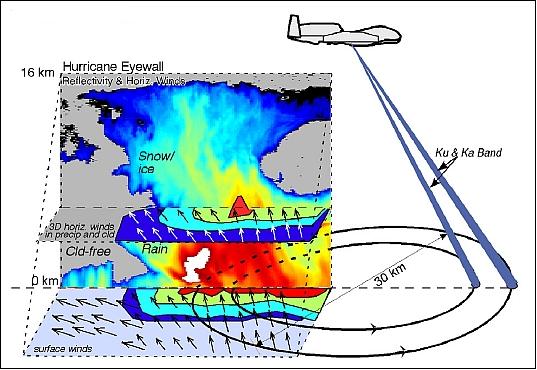
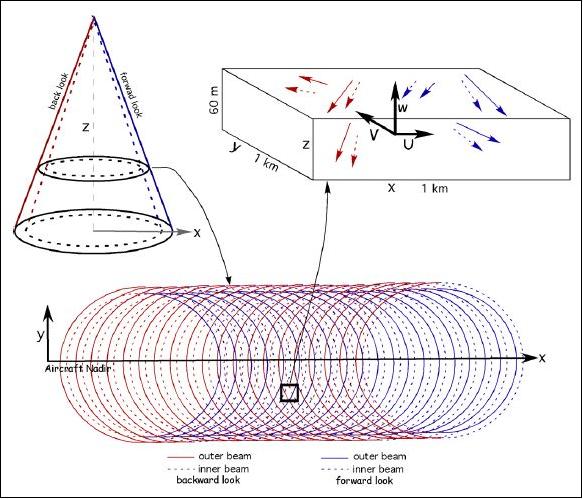
Legend of Figure 2: The blue and red lines represent fore and aft look and solid and dotted lines represent inner and outer incidence angle.
HIWRAP instrument:
The design of HIWRAP involved compromises in order to address the scientific requirements and hardware limitations imposed by the size, power, and weight constraints of the Global Hawk platform. A number of factors, such as the high altitude environment, limited space, weight and power posed challenges to the system design. The entire radar system must have the capability to operate in a “turnkey” autonomous operation mode. Table 2 provides performance specifications for HIWRAP, and Figure 3 shows the HIWRAP system block diagram (Ref. 5).
The radar intermediate frequency and local oscillator (IF/LO), RF transceivers and the digital receiver and processor subsystems are mounted on a rotating structure that typically spins at 15 rpm (Figure 9). These enclosures are not pressurized. Cooling of the power amplifiers is done by using heat pipes, heat sinks and fans. The data system, power distribution, navigation unit and the scanner controller are installed in the stationary payload areas on the aircraft. This configuration avoids the use of long waveguides and a multi-channel RF rotary joint, which is lossy and difficult to build and maintain at HIWRAP frequencies. Figure 11 shows the HIWRAP scanner assembly installed in Global Hawk payload Zone 25 (belly radome area).
The HIWRAP instrument consists of four subsystems
• Antenna subsystem
• Ku-/Ka-band transceivers
• Solid-state power amplifiers
• Digital receiver and processor subsystem.
Parameter | Ku-band | Ka-band |
Transmit frequency | Inner beam: 13.91 GHz | Inner beam: 35.56 GHz |
Peak transmit power (Tx) | 30 W | 10 W |
3 dB beam width | 2.9º | 1.2º |
Polarization | Inner beam: horizontal, Outer beam: vertical | |
Sensitivity dBZmin (60 m, 1 km) | -20 dBZ | -25 dBZ |
Dynamic range | > 80 dB | |
Doppler velocity | 0-150 m/s, accuracy <1.5 m/s @ 10 dB SNR | |
Conical scanning | 10-30 rpm | |
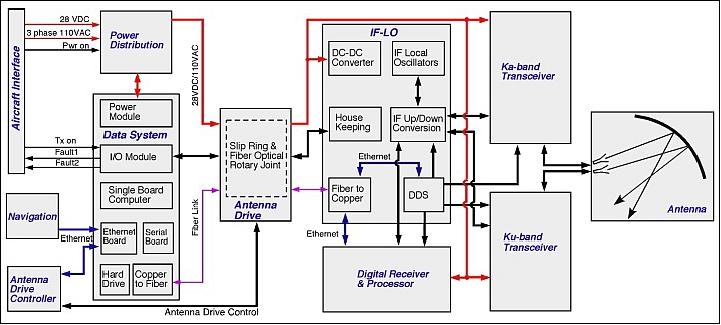
Antenna subsystem: HIWRAP utilizes a novel single aperture, dual wavelength antenna system that produces two beams, supports conical scanning and fits within the limited volume of the Global Hawk payload area. This antenna consists of a parabolic reflector and two dual-wavelength feeds – one aimed to produce a beam at 30º incidence and the other at 40º incidence. An azimuth table rotates the feeds and reflector as a single assembly to produce the conical scan. Each feed supports simultaneous operation at Ku- and Ka-band. The outer feed is tuned to the lower frequency Ku- and Ka-band channels and the inner feed to the higher frequency Ku- and Ka-band channels. The frequency separation between the two feeds permits HIWRAP’s receiver to separate the return signals from each beam and permit simultaneous transmission on one beam while receiving from the other.
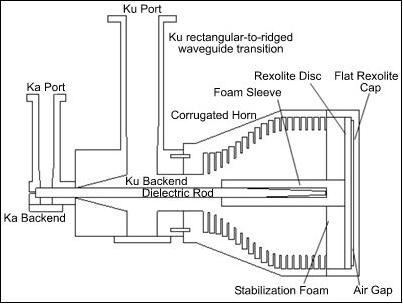
The Ka-band signal is carried on the dielectric rod. The supporting foam structure and the rod taper shape the Ka-band radiation pattern. The Ku-band radiation pattern is determined by the corrugated horn. The two feeds illuminate the main reflector to produce the two beams at 30º and 40º incidence with one-way 3 dB beam widths.

Transceiver: HIWRAP relies on a dual-wavelength transceiver that is modular in design. Due to the limited payload power, space and weight and the harsh environment of UAVs, a power efficient, compact dual-band transceiver compatible with high altitude operation has been designed for HIWRAP. This transceiver supports digital pulse compression through the use of inexpensive DSS (Direct Digital Synthesizer) chips to obtain 50% of the average power of the Ku- and Ka-band power amplifiers.
The design supports simultaneous operation at two wavelengths and multiple incidence angles in order to maintain high temporal and spatial resolution. Innovative approaches are being taken to enhance independent sample rates and utilize the full average power that the power amplifiers can deliver. This design takes advantage of mixing products in the RF up-conversion stage to produce the two RF channels at each band necessary to form the two beams. As such, this design only needs one LO (Local Oscillator) for each band, and thus saves on space, power consumption and weight.
The combination of DDS along with field programmable gate array (FPGA) technologies enabled the software controlled, versatile waveform generation needed to achieve, frequency modulation, frequency diversity and amplitude modulation, as well as synchronized radar timing control. An internal calibration loop provides an accurate measurement of the total transceiver gain to within 0.2 dB or better and samples the transmit waveform so that pre-distortion techniques can be used to improve pulse compression range sidelobe performance. Figure 6 shows a typical HIWRAP transmit and receive waveform cycle. Figure 7 shows the Ka- and Ku-band transceivers, and the IF and local oscillator subsystems.
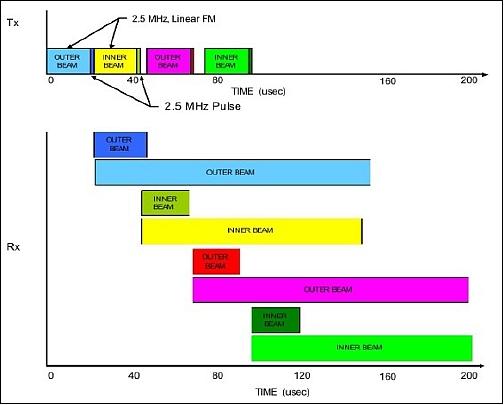
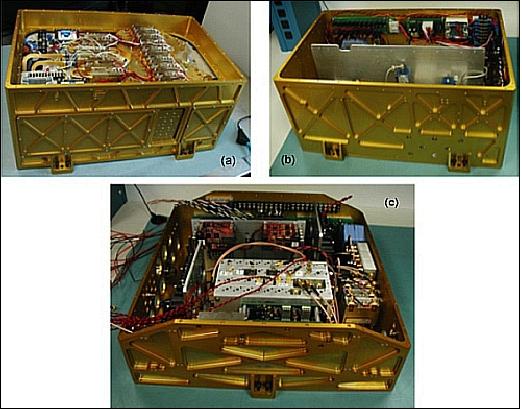
Power amplifiers: HIWRAP utilizes commercial power amplifiers that deliver 30 W at Ku-band and 4 W at Ka-band through power combining. The DDS in the first stage will not only produce the linear FM chirp transmit waveform, but will also hop the center frequency to improve the independent sample rate. An internal calibration loop also provides an accurate measurement of the total transceiver gain to within 0.2 dB or better and samples of the transmit waveform so that pre-distortion techniques can be used to improve range sidelobe performance.
By power combining four of these modules, HIWRAP system is able to realize average transmit power capability of 30 W and 10 W at Ku and Ka-band, respectively. The Ku-band amplifier has a mass of 1.1 kg with a volume of < 780 cm3.
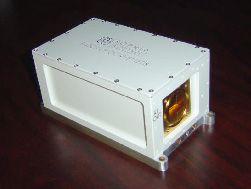
Figure 8: Photo of the Ku-band solid-state power amplifier (image credit: NASA)> Digital receiver and signal processor subsystem: This subsystem is responsible for implementing digital I&Q detection, match filtering (i.e. pulse compression), spectral and/or pulse-pair processing and data reduction through coherent and/or non-coherent averaging. The subsystem is using FPGAs (Field Programmable Gate Arrays) and low power consumption processors. This will provide the most compact solution and not require pressurization. To reduce risk, the system is network based so that the data can be easily ingested by a PC-based system where further processing algorithms may be applied. As the algorithms are tested and validated, they can be transferred to the FPGA-based processors with minimum impact. To reduce risks, the critical FPGA-based algorithms are being tested within a development platform from which the final stand alone printed circuit boards will be designed and fabricated. The migration to radiation-hardened FPGA technology is also being studied. Another novel feature of the FPGA-based digital receiver is that each IF channel will support up to eight independent sub-channels. With more than 90 dB of rejection and a 1.5 filter shape factor, HIWRAP will be able to utilize frequency diversity to improve its independent sampling rate and implement an advance phase correction scheme for unfolding its Doppler measurements. The primary digital receiver characteristics are: - Two IF channels per board - Eight independent sub channels per IF channel - 80 MHz max IF (Intermediate Frequency) - 500 kHz min frequency - 1 Hz resolution - 500 kHz to 20 MHz bandwidth per subchannel - 40 MHz aggregated bandwidth per IF channel - Greater than 80 dB SNR - 14 bit A/D resolution - Matched filter supports up to 30 dB pulse compression gain per subchannel - Supports up to 1000 range gates.
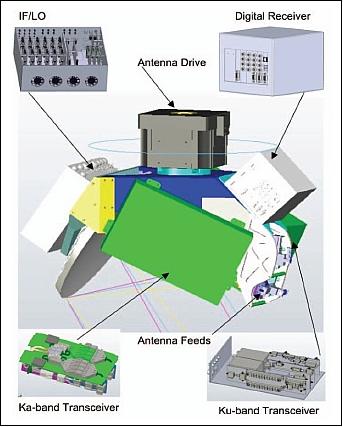
Figure 9: HIWRAP scanner assembly enclosures (image credit: NASA) The HIWRAP data system utilizes a (CPCI (Compact PCI) bus based SBC (Single Board Computer) to run the radar control program and to capture the raw or processed data from the digital receiver through a high-speed fiber optic/Gbit Ethernet link. The scanner is a DC powered, brushless, COTS (Commercial off-the-Shelf) unit with a superior mechanical design and flexible configuration. It communicates with the host computer system through either RS232 or Ethernet. HIWRAP also utilizes a dedicated high-speed navigation system to provide precise platform position/altitude information. Radar status information, scanner position and navigation data will be collected and saved by the host computer along with radar data. Flight testing: The long term HIWRAP plans are to fly long duration flights over hurricanes with the NASA Global Hawk based at NASA Dryden. Because of Global Hawk availability and that HIWRAP will have a number of new technologies to test, the WB-57 aircraft based at NASA Johnson will be used. The WB-57 provides an excellent simulator for the Global Hawk operating environment since both planes fly at similar altitudes. The HIWRAP instrument is also compatible to be installed into the ER-2 aircraft of NASA (Ref. 5). • Initial demonstration and validation flights of the HIWRAP instrument were conducted on the WB-57 aircraft in March 2010. This was done due to limited Global Hawk availability and the fact that HIWRAP had a number of new technologies to test.
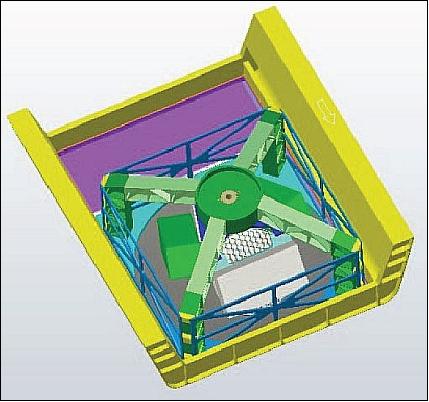
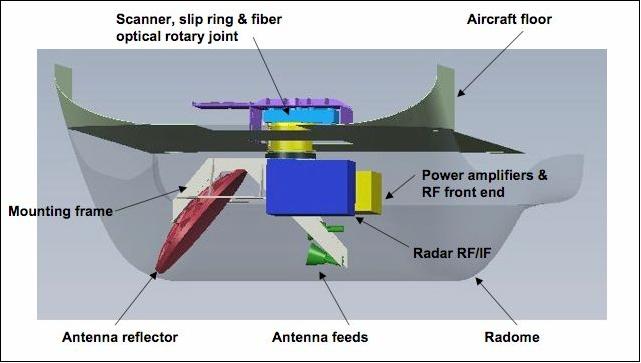
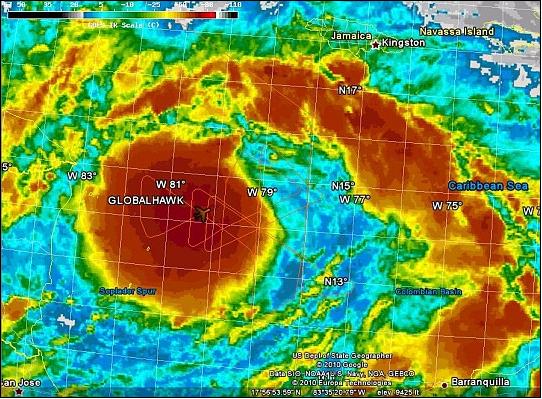
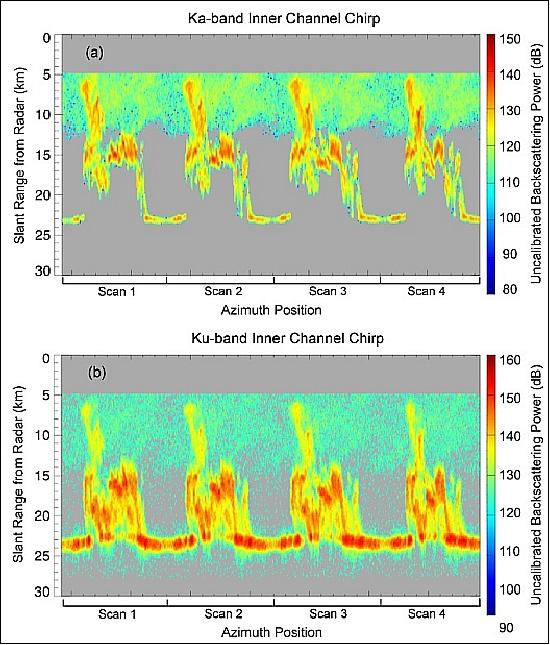
References
1) Gerald Heymsfield, James Carswell, Lihua Li, Dan Schaubert, Justin Creticos, Manuel Vega, Wayne Welch, “Status of the High-Altitude Imaging Wind and Rain Airborne Profiler (HIWRAP),” ESTC2008 (Earth Science Technology Conference 2008), June 24-26, 2008, College Park, MD, USA, URL: http://esto.nasa.gov/conferences/estc2008/papers/Heymsfield_Gerald_B5P2.pdf
2) Lihua Li, Gerald Heymsfield, James Carswell, Dan Schaubert, Justin Creticos, Manuel Vega, “High-Altitude Imaging Wind and Rain Airborne Radar (HIWRAP),” Proceedings of IGARSS 2008 (IEEE International Geoscience & Remote Sensing Symposium), Boston, MA, USA, July 6-11, 2008
3) Gerald Heymsfield, James Carswell, Lihua Li, Dan Schaubert, Justin Creticos, “Development of the High-Altitude Imaging Wind and Rain Airborne Profiler (HIWRAP),” NSTC2007 (NASA Science Technology Conference 2007), College Park, MD, USA, June 19-21, 2007, URL: http://esto.nasa.gov/conferences/nstc2007/papers/Carswell_James_B5P2_NSTC-07-0085.pdf
4) James R Carswell, Gerald Heymsfield, Lihua Li, Dan Schaubert, Justin Creticos, “A High Altitude Airborne Wind Mapping Radar,“ Proceedings of the 2008 IEEE Aerospace Conference, Big Sky, MT, USA, March 1-8, 2008
5) Lihua Li, Gerald Heymsfield, James Carswell, Dan Schaubert, Matthew McLinden, Manuel Vega, Martin Perrine, “Development of the NASA High-Altitude Imaging Wind and Rain Airborne Profiler,” 2011 IEEE Aerospace Conference, Big Sky, MT, USA, March 5-12, 2011
6) J. R. Carswell, “Final Report: A Revolutionary Wind and Rain Airborne Profiler for Unmanned Aircraft Vehicles”, NASA STTR Final Report, Contract No. NNG05CA96C, January 2006
The information compiled and edited in this article was provided by Herbert J. Kramer from his documentation of: "Observation of the Earth and Its Environment: Survey of Missions and Sensors" (Springer Verlag) as well as many other sources after the publication of the 4th edition in 2002. Comments and corrections to this article are always welcome for further updates (eoportal@symbios.space).